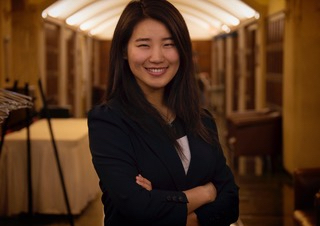High-stakes testing doesn’t get any higher than the gaokao
Summer heat always reminds me of my high school classroom. During the last months of my senior year, I probably spent more time in that classroom than at home, studying alongside my 45 classmates in preparation for the final ordeal, gaokao, the Chinese college entrance examination that takes place only once a year.
To understand the differences between the Chinese and American educational systems, start with one of major shaping forces for education, the college selection process. In the U.S., a student is evaluated by admission offices using various measurements, but in China, the admission decision is made based on one and only one measurement: the score from gaokao.
Every June, all college-aspiring high school graduates take the two-day exam at the same time, no matter which province he or she is from. A few days after students get their scores, universities release their threshold scores for admission. If a student’s gaokao score passes the score of the college he or she applied to, they will be admitted. Otherwise, the student will have to seek a college with a lower threshold score.
Since students’ applications are reduced to one standardized test score, high school in China is exam-oriented and drill-intensive. Many schools extend teaching hours as much as possible so that their students have an edge over others in gaokao. In a notorious example, students at one school live under military-style management, required to study more than 15 hours a day, almost seven days a week.
So it’s not surprising that Chinese students tend to perform well on standardized tests. Such academic traditions strangle creativity and critical thinking abilities. But on the other hand, top students usually have a very solid understanding of the subjects and are extremely hard-working.
In schools with fewer resources, physical education, extracurriculars, hobbies and anything that does not directly contribute to a higher score are downplayed. As a middle schooler I went to school from 7 a.m. to 9 p.m. weekdays and had classes on weekends as well. I simply did not have time to do anything else.
I am fortunate to have experienced both educational styles. I was selected for a pilot program after gaokao, and won a scholarship to Westminster College in Fulton, Mo. I am constantly impressed by how articulate, creative and well-rounded most of my classmates are. I most appreciate that they value the learning process of class projects and group work, instead of treating it as means to an end. Most of them are passionate about their major, motivated to learn and improve. Having been buried in exams and textbooks for so many years, I struggled a great deal with formulating my own ideas and writing academic essays. On the other hand, as an economics and statistics tutor at the University of Michigan, I find that my students have a difficult time with basic calculations, which can be easily improved with more practice.
It (mostly) works for China
Despite its disadvantages, the Chinese system may be the best one for the country, considering its current realities. For many underprivileged students, participating in gaokao and getting into a college is the only chance for social mobility they have. Everyone is judged the same, regardless of background.
Students from rural areas may not have as much support as students in the city, but it is possible for them to make up the difference with hard work. The strict regulations for gaokao prohibit cheating in any form, and the government strives to ensure that gaokao is one of the areas untainted by corruption.
A college education is the best way for an individual to get out of poverty because college is much more affordable in China than in the U.S. The tuition for one of the best universities in mainland China, Tsinghua University, is around 5000 yuan ($746) per year, and housing is around 1500 yuan ($224) per year. Universities do not usually offer scholarships upon admission, but almost all offer merit-based aid during the school year. Most students are able to graduate from college without significant financial burden.
And shortcomings in the gaokao system are mitigated somewhat. The threshold scores for a university are different in different provinces, since educational resources are unevenly distributed. Students from minority ethnic groups, especially those whose native languages are not Chinese, can have bonus points added to their final scores. Since 2003, the nation’s department of education has been encouraging prominent universities to implement independent recruitment, aiming to provide students with outstanding achievement a road to higher ed other than standardized tests.
China needs to constantly negotiate the conflict between reaching as many students as possible and educating students to be the best, the most innovative and the most enterprising. The challenge is becoming more salient as China tries to shift its economic backbone from manufacturing to high-tech and innovative enterprises. Gaokao may not be optimal, but it is functioning under China’s social and economic realities.
See what new members are saying about why they donated to Bridge Michigan:
- “In order for this information to be accurate and unbiased it must be underwritten by its readers, not by special interests.” - Larry S.
- “Not many other media sources report on the topics Bridge does.” - Susan B.
- “Your journalism is outstanding and rare these days.” - Mark S.
If you want to ensure the future of nonpartisan, nonprofit Michigan journalism, please become a member today. You, too, will be asked why you donated and maybe we'll feature your quote next time!


 Peiyu Yu is a graduating senior in the Ford School of Public Policy at the University of Michigan. She plans to work in China or internationally after graduate school.
Peiyu Yu is a graduating senior in the Ford School of Public Policy at the University of Michigan. She plans to work in China or internationally after graduate school.